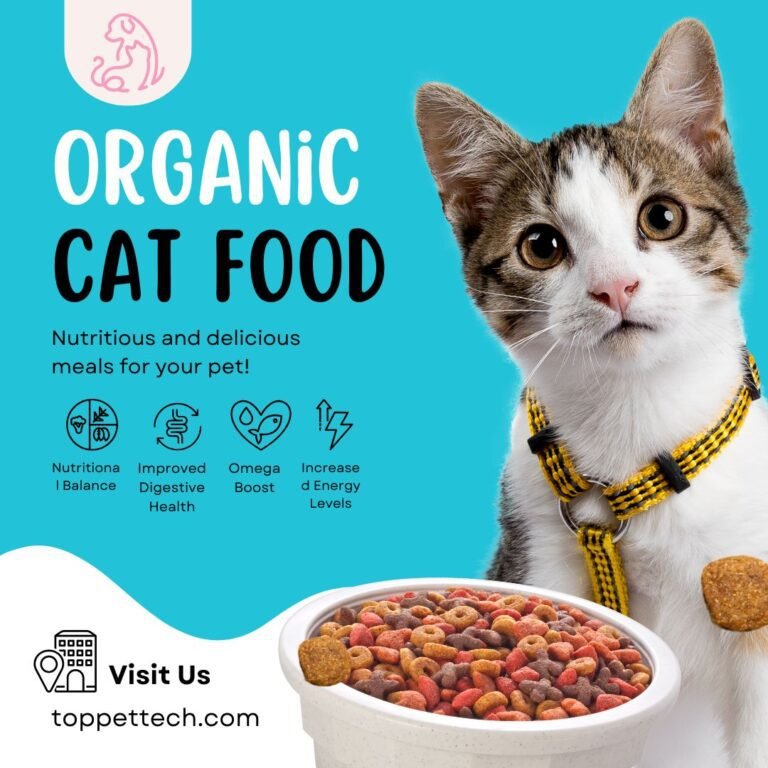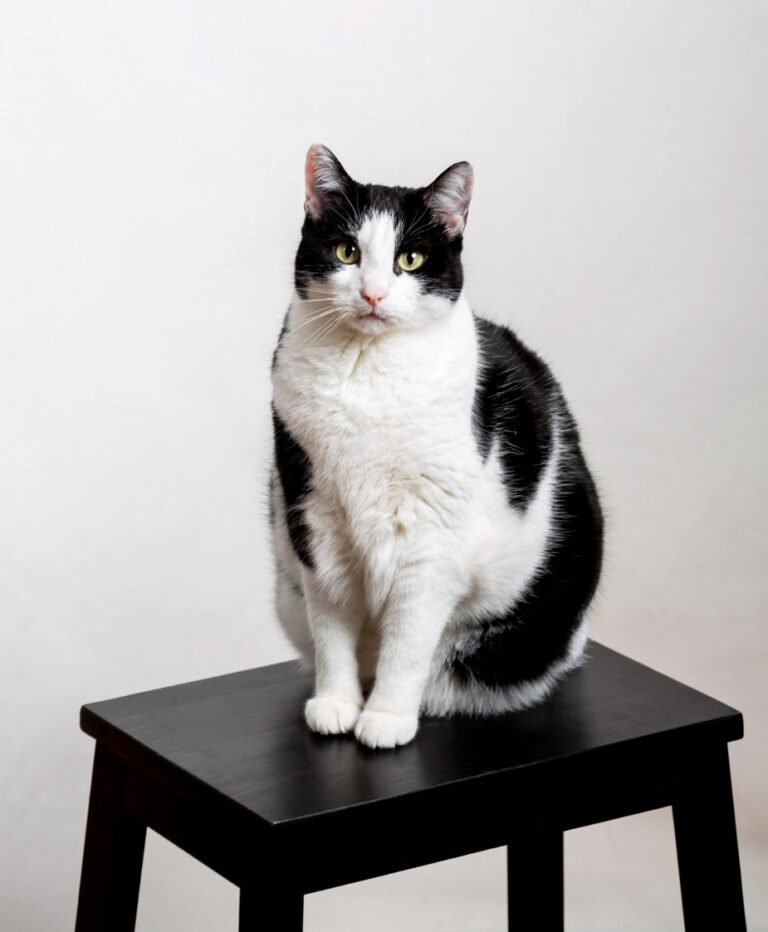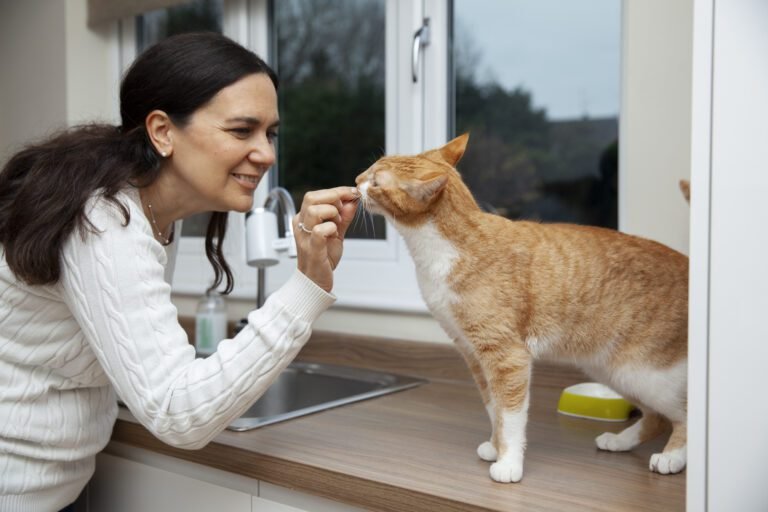Most cat parents want the same thing—to keep their cats healthy without turning mealtime into a science experiment. You’ve probably asked yourself, “What can I feed my cat that’s easy, safe, and actually good for them?” If you’re a pet lover in the U.S., especially with indoor cats, you’re not alone. I’ve spoken to so many cat owners confused about ingredient labels, struggling with picky eaters, or just searching for high-calorie cat food for that underweight rescue. Let’s make this simple.
What’s the best high-calorie cat food ?
The best simple food to feed cats is high-calorie cat food with limited ingredients like chicken, turkey, or salmon. These mimic what cats naturally eat, and they’re easier on digestion, especially for indoor cats. Cats are obligate carnivores—fancy word, but it means they must eat meat to survive. Simple isn’t just about what’s “easy to serve.” It’s about choosing food that’s close to what cats are meant to eat. Think: high protein, low fillers, minimal junk.
Real meats come first
Pick foods with real meat listed as the first ingredient. Chicken, turkey, lamb, or salmon—those are solid picks. Avoid anything that starts with “by-product meal” or just “meat.” Be specific.
Data Tip: Use a comparison chart showing different cat food brands and their first 3 ingredients. This could be a simple infographic.
Is high-calorie cat food important?
Yes. High-calorie cat food helps underweight cats gain healthy mass, especially if they’re recovering from illness, highly active, or have a fast metabolism. Some cats burn calories faster. Others lose weight from stress, dental issues, or aging. That’s when high-calorie options become essential—not a luxury.
Signs your cat might need more calories:
-
Visible ribs or spine
-
Lethargy
-
Loss of muscle mass
-
Eats but doesn’t gain
Products like Hill’s Prescription Diet a/d are formulated for recovery and weight gain. But don’t self-prescribe—check with a vet if you’re unsure.
Image Suggestion: A side-by-side photo of a healthy cat vs. a visibly underweight one (non-graphic). Add labels for educational value.
What are the top 5 healthiest cat foods?
The top 5 healthiest cat foods are Hill’s Prescription Diet, Royal Canin, Purina Pro Plan, Wellness Core, and Blue Buffalo. These offer balanced nutrition, good protein sources, and limited fillers.
Let’s break them down real quick:
-
Hill’s Prescription Diet
Vet-recommended for specific health issues. Good for kidney care, weight gain, and urinary support.
(Keyword: hills cat food prescription) -
Royal Canin Indoor Adult
Specially made for less active, indoor cats. Controls weight and odor.
(Keyword: indoor cat food, best diet for indoor cats) -
Purina Pro Plan True Nature
Grain-free, high-protein formulas. Great for cats that need more energy. -
Wellness Core Grain-Free
Packed with protein from turkey and chicken. Also includes probiotics and antioxidants. -
Blue Buffalo Healthy Gourmet
Real meat, no corn, wheat, or soy. And cats actually like the taste.
Data Tip: Include customer ratings or average price per pound for each food. Bar graphs or pie charts would work here.
Are cat food pouches better than dry food?
Yes. Cat food pouches are often better than dry food because they contain more moisture, which supports kidney and urinary health.
Water matters. Many cats don’t drink enough on their own, especially indoor cats. That’s where wet food or pouches come in handy. Dry food has its place—like cleaning teeth and being easier to store. But if you’re looking for something simple, moist, and closer to nature, pouches are the way to go. Brands like Sheba, Fancy Feast, and Wellness make single-serve pouches that cats seem to adore.
Image Suggestion: Photo of a hand squeezing food from a pouch into a bowl vs. dry kibble in another bowl.
What’s the best diet for indoor cats?
The best diet for indoor cats is one with controlled calories, high protein, and fiber to prevent hairballs and weight gain. Indoor cats nap a lot. No hunting. No wild chase. So, they gain weight easily.
Look for phrases like:
-
“Indoor Formula”
-
“Hairball Control”
-
“Weight Management”
Hill’s, Royal Canin, and Blue Buffalo all make indoor-specific formulas that help balance your cat’s lifestyle with their diet. And let’s not forget litter box issues—fiber helps digestion and cuts down the smell.
Infographic Suggestion: Indoor vs. outdoor cat diet chart showing calorie needs, activity level, and typical health issues.
Can I feed my cat human food?
You can feed your cat small amounts of plain, cooked meats like chicken, turkey, or salmon—but avoid seasoning, sauces, or bones.Think of it like snacks, not meals. Here’s a quick yes/no list:
-
Yes: Plain chicken, boiled eggs, plain rice (in moderation)
-
No: Onions, garlic, chocolate, grapes, milk, seasoned meats
Feeding scraps off your plate can lead to begging, digestive issues, or even toxicity. It’s best to stick to cat-formulated options unless your vet gives the go-ahead.
Data Suggestion: A table showing safe vs. unsafe human foods for cats. Make it visual, like a red/green traffic light style.
What food do vets recommend for picky eaters?
Vets often recommend wet cat food with rich aroma and texture, like gravy-based pouches or high-protein pâtés. Picky eaters can drive you nuts.Try warming wet food slightly to release aroma. Some cats prefer fish flavors over chicken. Others need smaller meals throughout the day. If all else fails, ask your vet about appetite stimulants or prescription blends like Hill’s or Royal Canin Recovery. Also, remember—sudden changes in eating habits might signal illness, not just fussiness.





